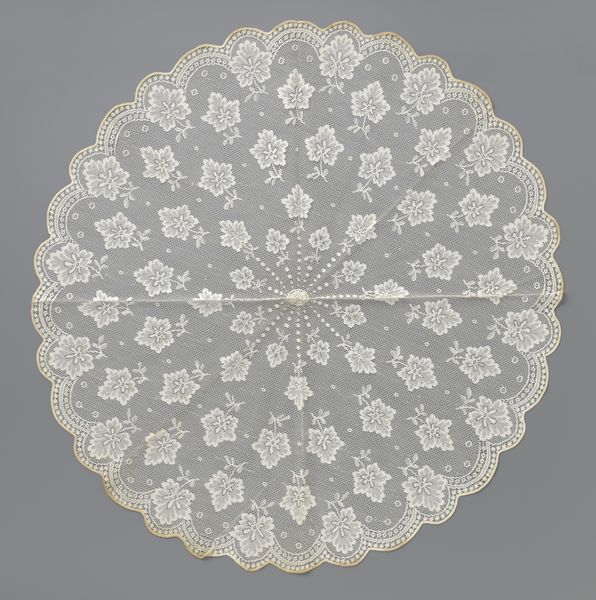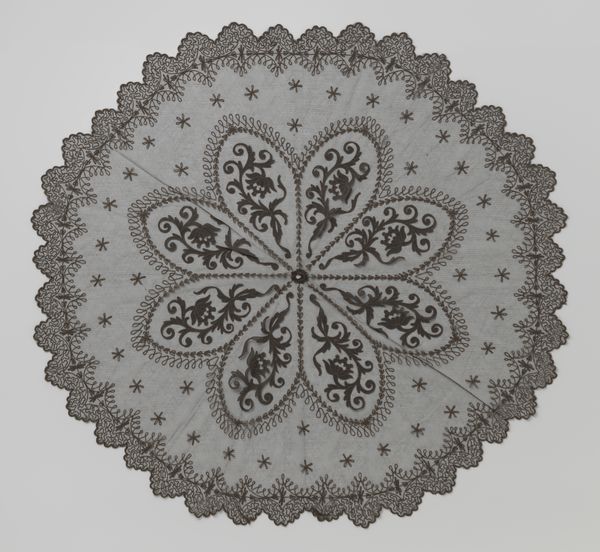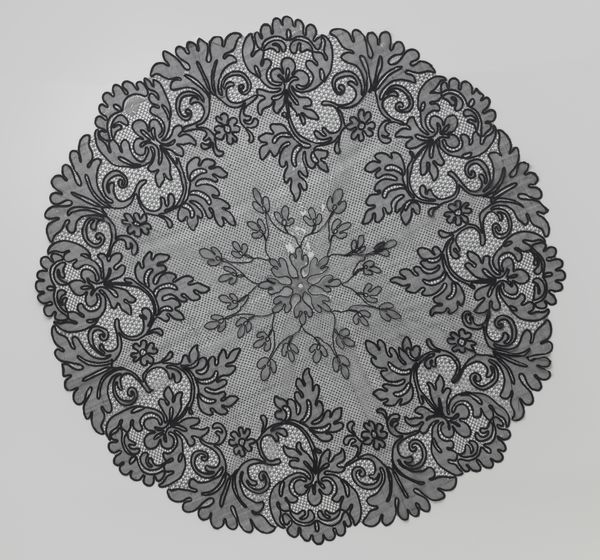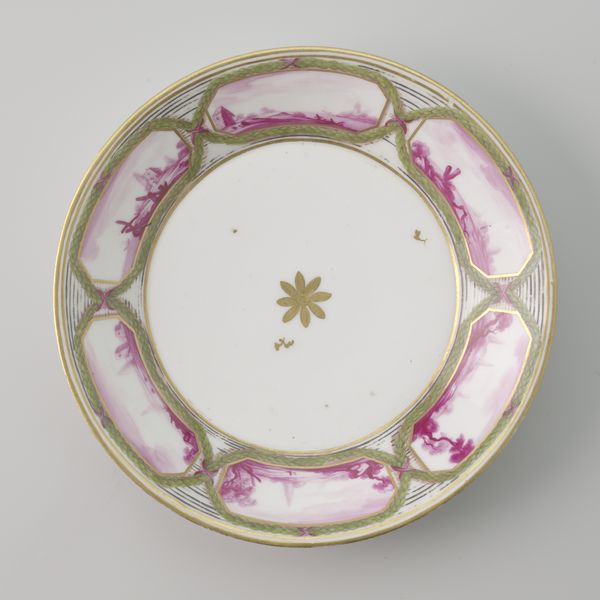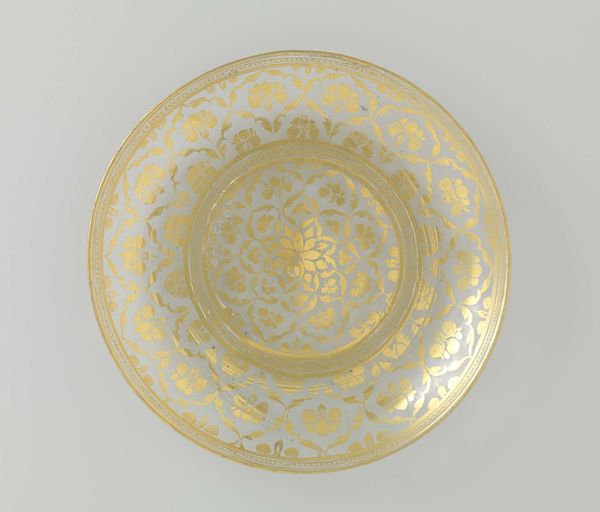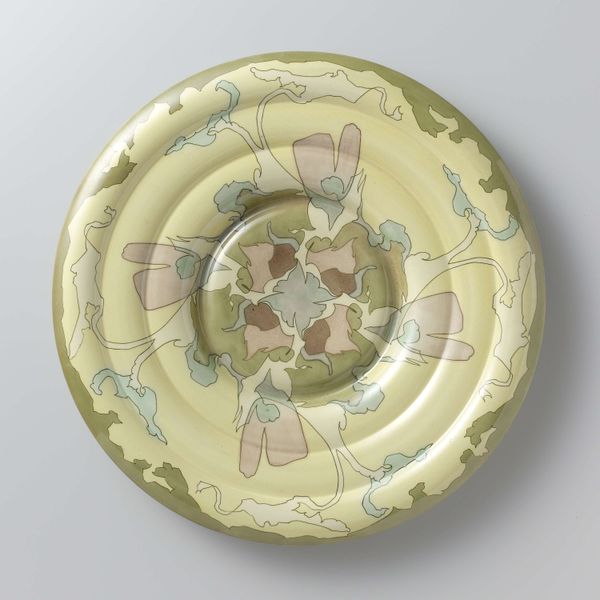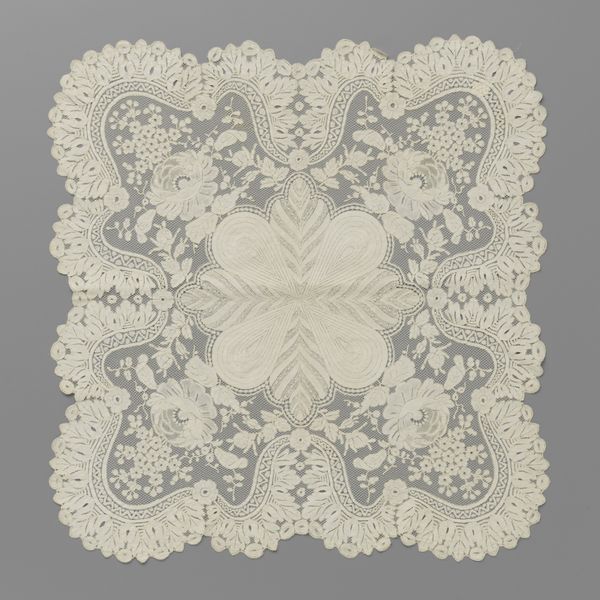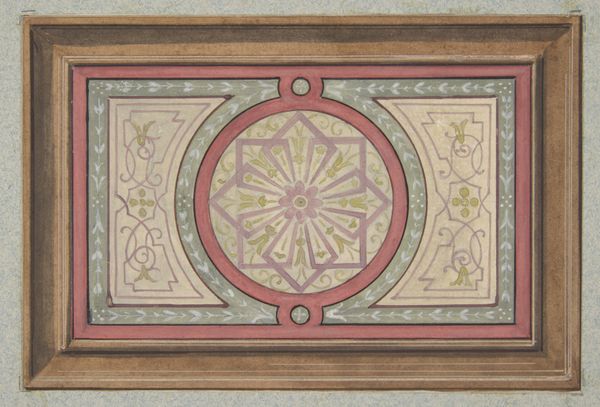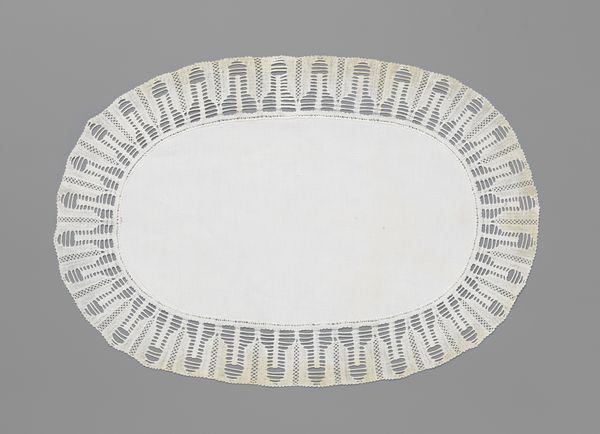
Parasoldek van witte machinale tule (van katoen?), versierd met tamboereerwerk in wit en groen c. 1875 - 1900
0:00
0:00
Copyright: Rijks Museum: Open Domain
Editor: Here we have a parasol top from around 1875 to 1900, made of white machine-made cotton tulle, decorated with white and green tambour embroidery. It’s incredibly delicate, almost like looking at frost on a windowpane. What do you notice about the piece? Curator: The overall circular composition is quite striking. Notice the radiating lines that bisect the circle into equal sections, creating a structural framework. The embroidered floral pattern then interplays with that strict geometry, softening it, offering an intricate layer to the overall schema. How does the pattern's repetition affect your reading of the textile? Editor: The repeated floral design gives it rhythm. The eye keeps moving, following the circular arrangement. But beyond the visual appeal, the execution itself must have required serious dexterity. Curator: Precisely. Consider the materials: fine tulle, delicate embroidery. The artist has achieved remarkable textural contrast and visual depth. The near-monochromatic palette focuses the attention on the materiality, the minute variations within that very limited range. Editor: It’s amazing how much is happening within what initially seemed to be a simple design. So much visual intricacy revealed through closer inspection. Curator: And consider how such a thing might filter sunlight. Editor: I had not even thought about that aspect! Now it feels more intimate, the textile whispers untold stories from the past. Thanks! Curator: A pleasure! The real pleasure resides in this close inspection of how form and material speak to each other.
Comments
No comments
Be the first to comment and join the conversation on the ultimate creative platform.
